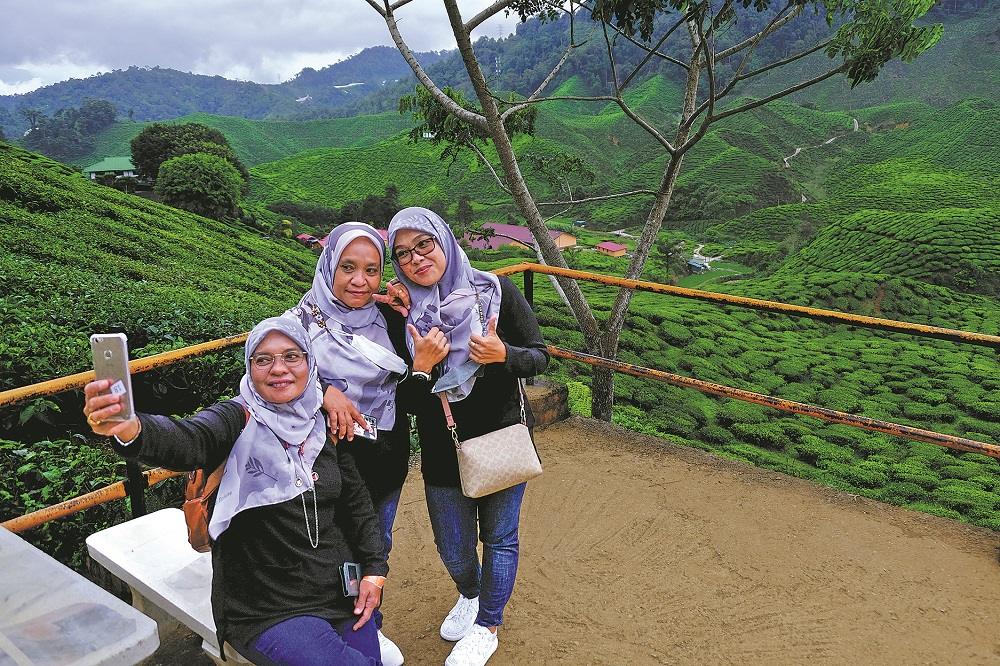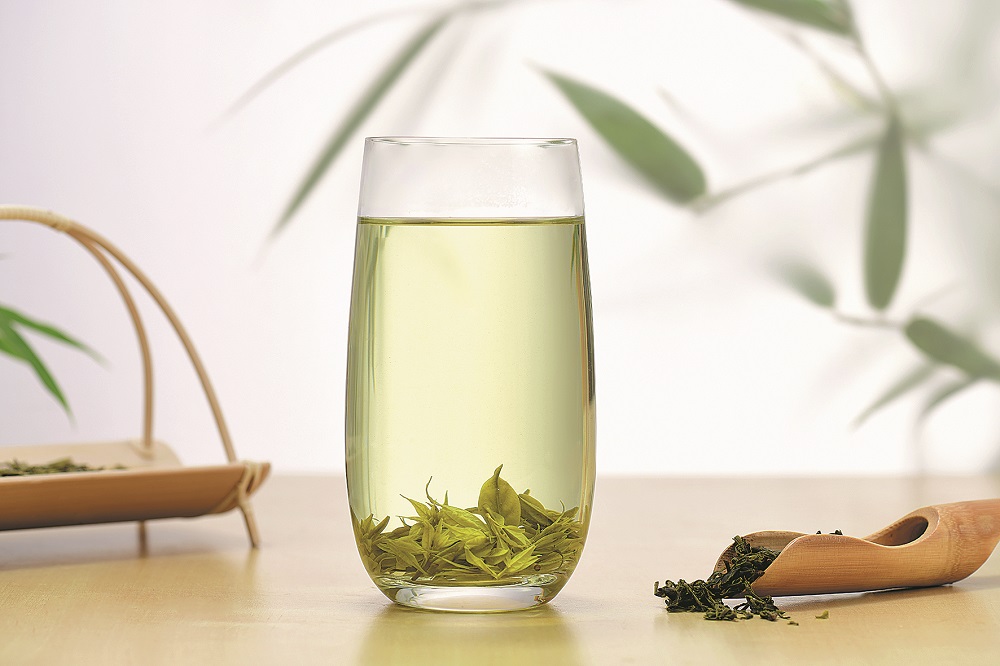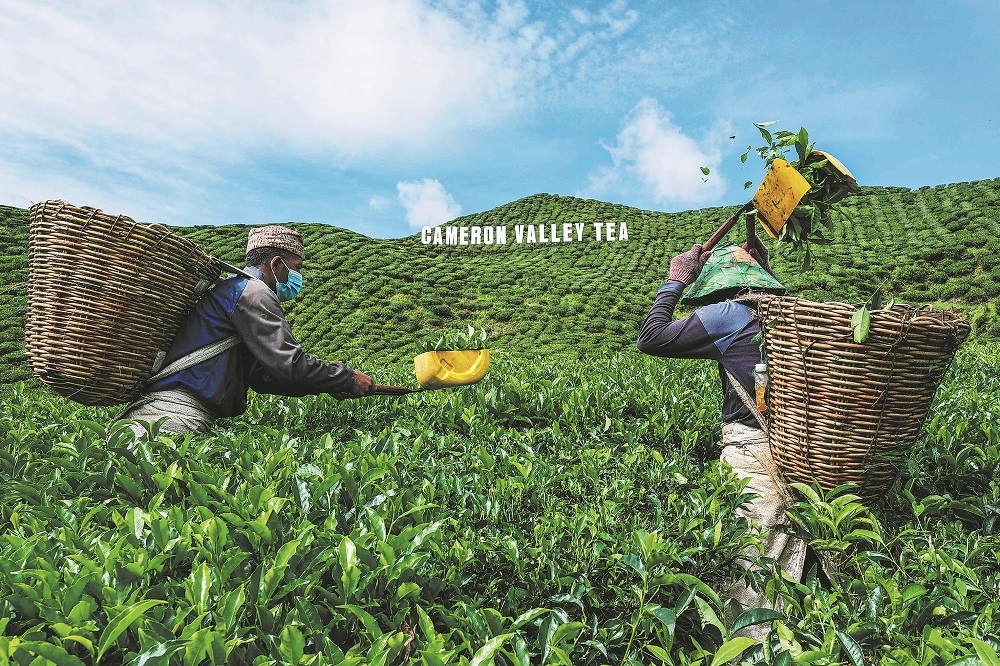Editor's note: In this weekly feature China Daily gives voice to Asia and its people. The stories presented come mainly from the Asia News Network (ANN), of which China Daily is among its 20 leading titles.

Visitors take selfies at a tea plantation in Malaysia. SAMSUL SAID/GETTY IMAGES
At the quirky little Tanah dan Air Tea Bar in Petaling Jaya, tea artist Law Siow Fei is hard at work. Hunched over a long table, she gently pours tea out of a tiny little tea pot into three equally tiny porcelain cups, then passes one to a customer.
"This is a Phoenix Oolong tea — it is very popular among the Teochew community," she says.
The tea is aromatic and nuanced, with floral streaks running through its golden waters.
Across the space, another table is occupied by a young couple, their heads bowed over cups of Chinese tea, sipping intently and oohing and aahing as they rediscover the pleasures of this heritage brew.
In many ways, people like Law are keeping the culture and knowledge of traditional Chinese tea alive in Malaysia, paving the way for younger generations to appreciate this ancient beverage.
In Malaysia, Chinese tea has a history that dates back to the 15th century when Admiral Zheng He first brought tea to Malacca during his voyages. The intermarriage of Chinese traders with local women and the eventual Peranakan communities that sprung from these unions also created a demand and interest in Chinese tea in then-Malaya.

A cup of Chinese green tea. PHOTO PROVIDED TO CHINA DAILY
When the bigger wave of Chinese migrants began arriving in the country in the 19th and 20th centuries to work in the tin mines, they too brought tea with them.
"Because they were poor, they couldn't pack many things. One of the things that could withstand travel well was tea leaves. And the tea leaves that they brought were those with long shelf lives which were typically dark teas — the same sort that explorers like Marco Polo brought around the world. So very little of the white teas made it to Malaysia," says Koh Peng Chye, whose family has been in the tea industry in Malaysia for nearly 100 years and now runs modern tea bar Beca Tea.
According to an article published by the Tea Trade Association of Malaysia, different Chinese communities in Malaysia have different predilections for tea-drinking. For example, the Cantonese have a preference for Liu Pao dark tea; the Hokkiens and Teochew are partial to Oolong tea; and the Hakkas traditionally opt for green tea.
Essentially, all Chinese tea comes from the Camellia sinensis plant. But what separates different teas is the way they are processed.
While the Western world recognizes four kinds of teas, there are six acknowledged types of Chinese teas — green tea, yellow tea, white tea, Oolong tea, dark tea and red tea.

Workers pluck tea leaves in Cameron Highlands in Pahang, Malaysia. MOHD RASFAN/AFP
Tea drinkers
Although the practice of drinking Chinese tea would likely have been introduced by new Chinese arrivals to Malaysia centuries ago, the knowledge and culture behind the art of tea-drinking has been somewhat lost over the generations.
In recent years though, there has been a resurgence in interest among younger Malaysians, partly driven by health concerns and an increased desire for pure teas. This is bolstered by the fact that certain teas have been shown to have health properties.
White tea, for instance, has high levels of antioxidants that may have cancer-fighting properties while green tea can boost heart health and lower cholesterol levels. Oolong tea, on the other hand, contains an amino acid that reduces anxiety levels.
"There is a growing interest among younger people who are health-conscious in tasting or drinking tea that doesn't have any sugar, milk or cream," says Law.
While Law's tea bar honors traditional Chinese tea brewing, Koh's Beca Tea aims to appeal to both conventional tea drinkers as well as those seeking out more contemporary fare that is better for them.
"I believe those who grow up with bubble tea are already starting to gravitate toward the more pure teas. At Beca Tea, we are like a midpoint for this transition. People who are sick of all the sugars and artificial flavorings and colorings are trying to move to purer tea but are not quite sure where to go, so this is where we come in.
"We can introduce you to tea by easing you into tastes that you are more familiar with before going into the pure stuff," he says.
Koh also believes that many younger people who have lost touch with their roots are keen to rediscover it in more accessible ways.
"I think the knowledge of Chinese tea culture and tea drinking was not passed down because the earlier Chinese people who came to Malaysia were menial workers who had busy lives. They did not have the luxury of sitting down, enjoying tea and passing on the knowledge. So I think an entire generation lost out on that knowledge transfer and cultural practice.
"So at Beca Tea, I am encouraged to see young people — anyone between the ages of 20 and 40 — coming because they are curious to know this Asian culture that they have forgotten," says Koh.
Law says she has also noticed that as time has progressed and Chinese tea has become more mainstream in Malaysia, the number of non-Chinese tea drinkers has also shot up.
"I have noticed quite a number of Malay customers who are interested in Chinese teas and how to brew them, so I think slowly Chinese tea will become more popular throughout Malaysia," she says.
THE STAR, MALAYSIA